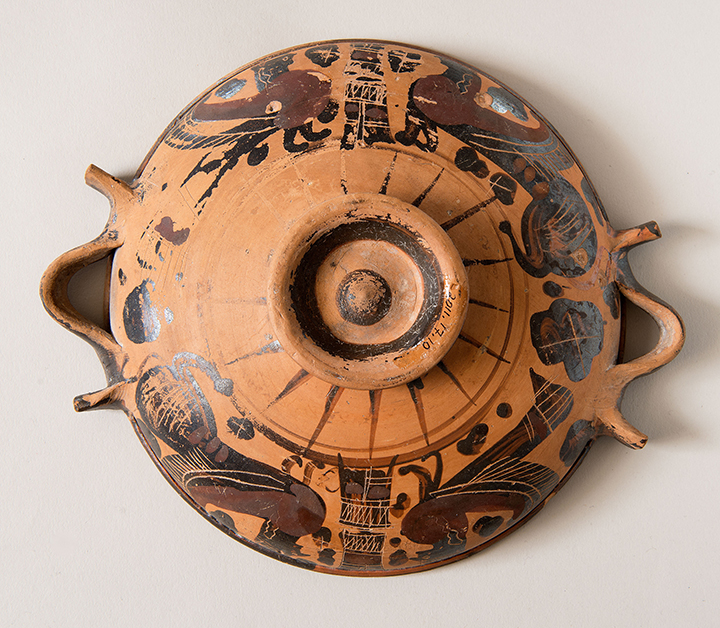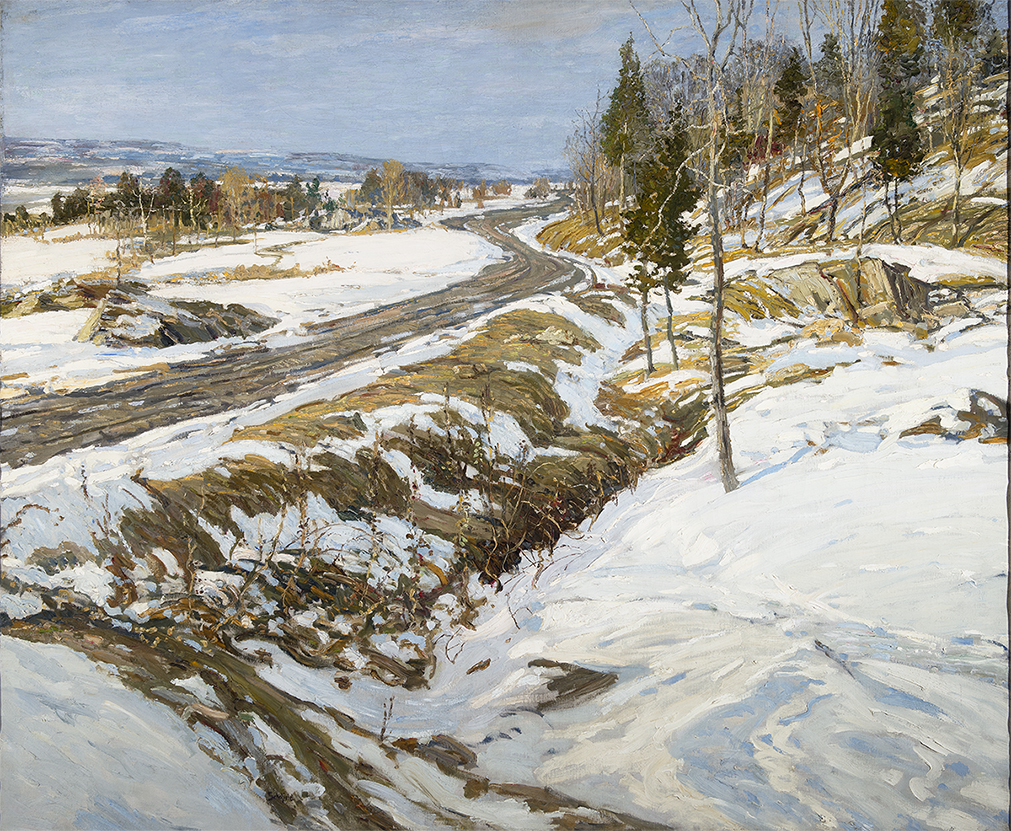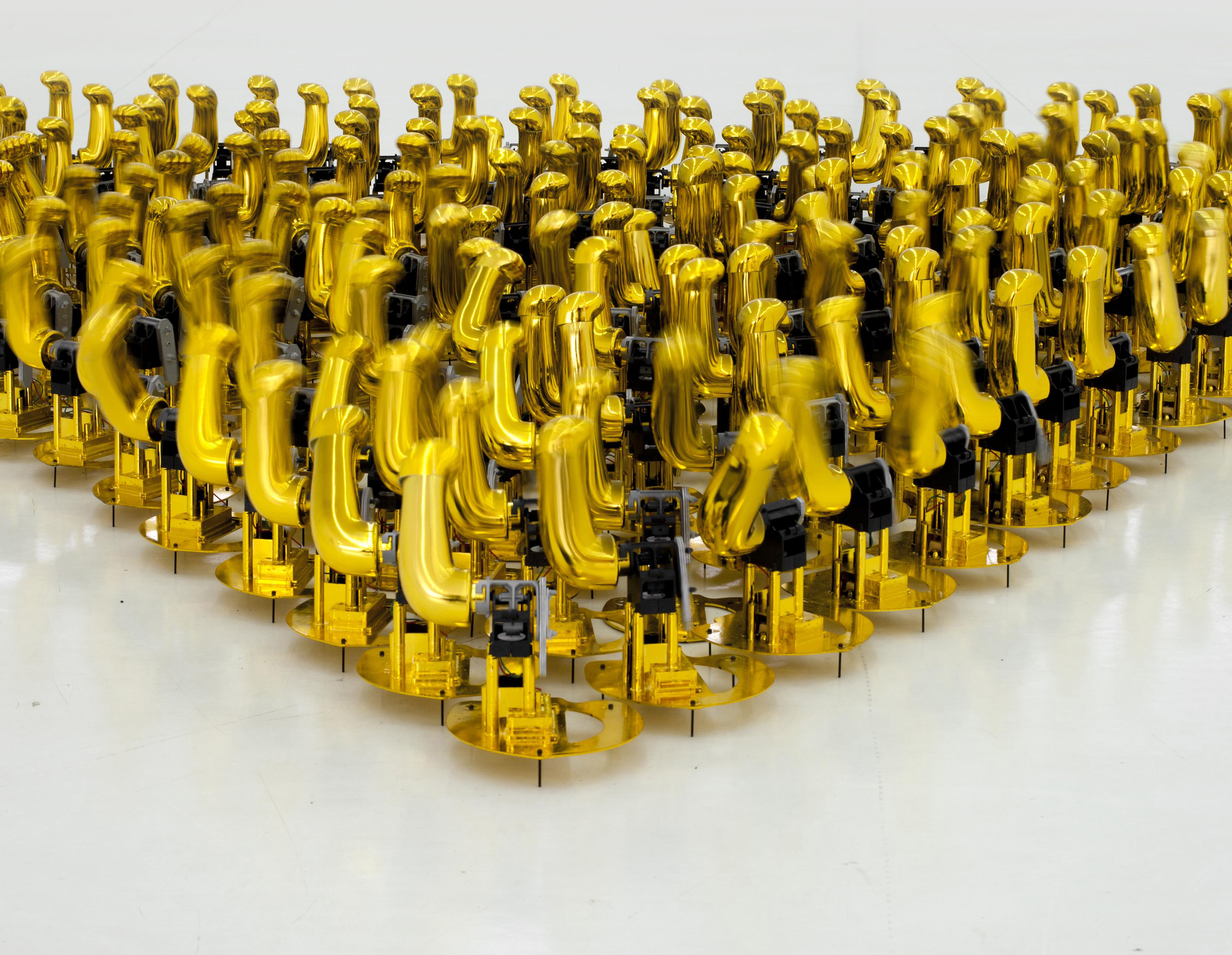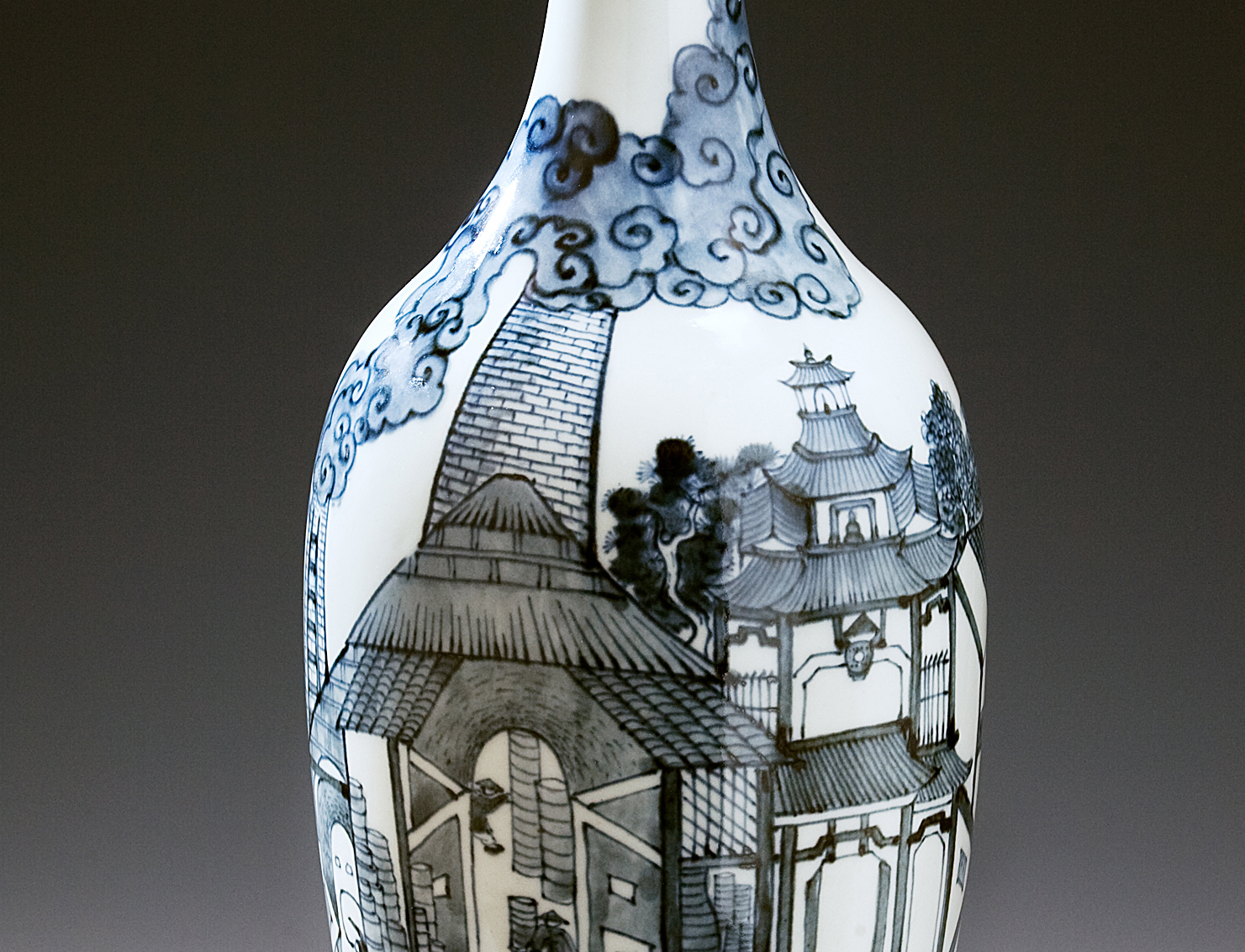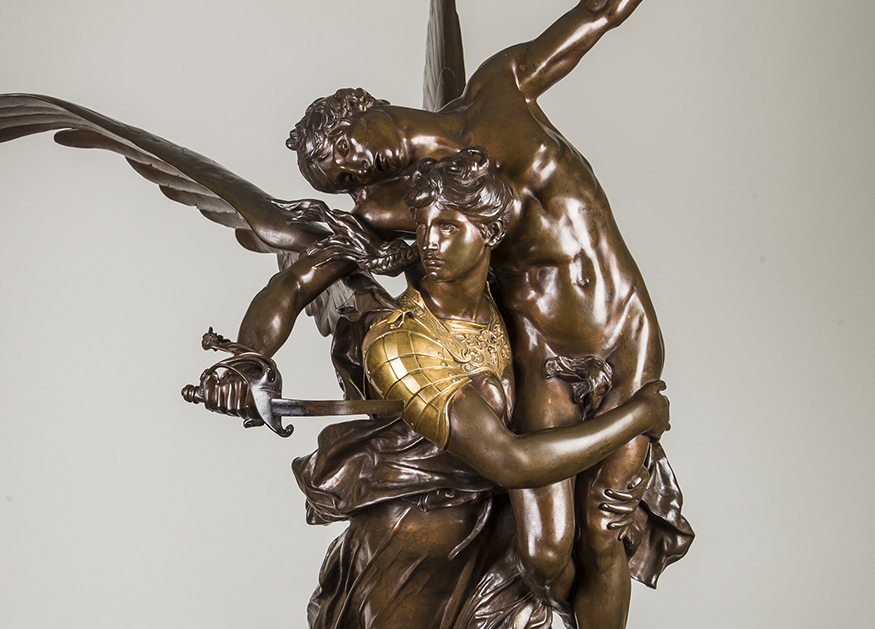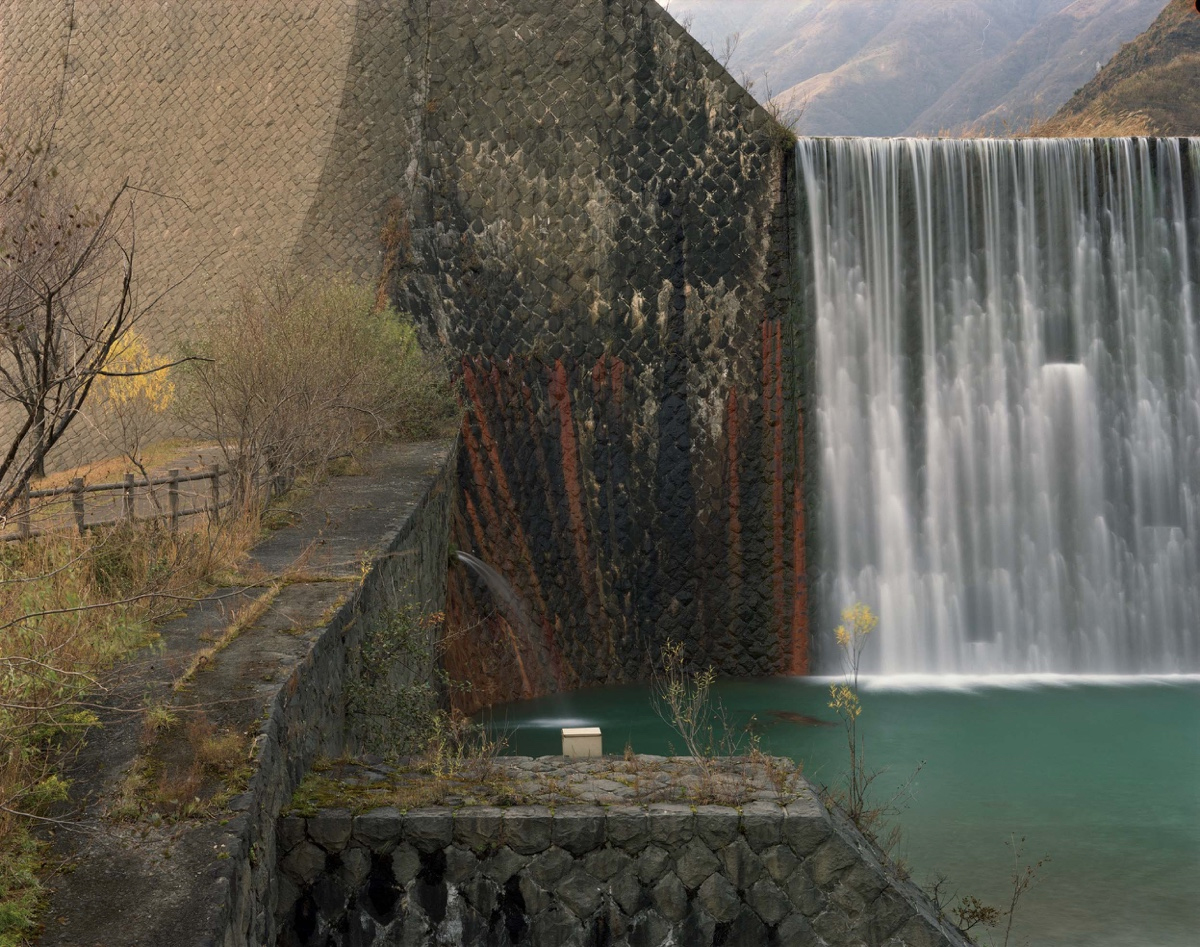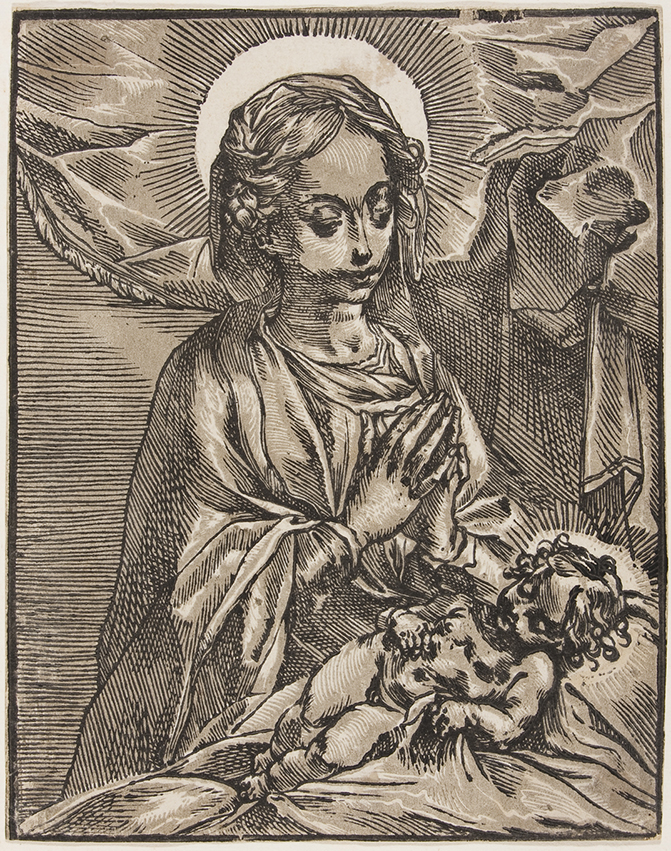May 22–September 26, 2015
In ancient Greece, ceramic vessels were used for a variety of purposes, from storing food and drink and rewarding Olympic champions, to marking graves in cemeteries and decorating dining rooms. This exhibition considers the nature and function of ceramic vessels from Greece and Cyprus. The Cypriot vessels in this exhibition date from the Late Bronze Age and Early Geometric period. Their shape and decoration reveal the role of Cyprus as a center for trade, which encouraged the development of specific types of vessels to indicate their nature and origin.
The vessels from Greece come from the fifth and fourth centuries BC and were produced in the region around Athens. During this time, Greece was experiencing what can be called a “golden age,” characterized by the flourishing of writing, philosophy, and art. The highly refined nature of the decorations and the inclusion of figurative and narrative elements illustrate the dominant role of Athens in the producing of fine ceramic ware.
By examining the relationship of the vessel shapes to their decorations, viewers can examine key questions: what were the functions of specific ancient Greek and Cypriot ceramics? Did decorative design interplay with shape and function, and if so, how?
These works are on loan from Bryn Mawr and Wilson colleges.
This exhibition is a curatorial project by archaeology major Sarah Eisen ’15.
Reception: September 4, 2015, 5–7pm
Walter Elmer Schofield (1866–1944) was a leading figure among the Pennsylvania landscape painters working in the Bucks County / New Hope area. He is best known for his vibrant, masterfully painted winter scenes of snow-covered riverbanks along the Wissahickon, Schuylkill, and Delaware Rivers and as well for his bright, summer views of cottages and the rocky coastline of Cornwall, England. Schofield gained prominence during the early decades of the twentieth century, showing his work widely and successfully in major museums, expositions, and galleries in New England, New York, the Mid-Atlantic, and the Midwest.
Schofield was born in Philadelphia and attended the Pennsylvania Academy of the Fine Arts (1889–1892) and the Académie Julian in Paris (1892–1894). In spite of such academic influences, Schofield, like many American artists, was drawn to the French impressionists, who, in the 1870s, painted out-of-doors (en plein-air) with vigorous daubs of color in a manner that challenged the artistic establishment.
By the turn of the century, Schofield developed a style that integrated the plein-air qualities of the impressionists with the vibrant color contrast of the realists. This manner, which is displayed in the works selected for this exhibition, became a hallmark of the Pennsylvania impressionists.
Schofield: Impressionist Landscapes presents an intimate selection of seventeen works by the artist. It complements the pioneering retrospective exhibition organized by the Woodmere Art Museum (2014), drawing together key works from that venue as well as from other important collections.
This exhibition is organized by THE TROUT GALLERY.
PULL LEFT_Not Always Right
Emerging Artists in Contemporary China
October 8, 2015 - December 12, 2015
PULL LEFT draws together works by a selection of young contemporary Chinese artists. The works represent the views of artists under the age of 40 who are shaping and defining the future of art in what is becoming one of the most important contemporary art markets in the world. Organized by Taikang Space, a leading non-profit contemporary art center in Beijing, PULL LEFT explores a wide range of issues with a degree of freedom from the economic demands that shape the nature of exhibitions at commercial galleries and the ideological pressures that frequently shape decisions at the nation’s official museums. PULL LEFT highlights the work of young Chinese artists who are engaging in personal and conceptual projects that respond to a global environment. Includes work by Cai Dongdong, Gao Weigang, Wang Sishun, Ma Qiusha, Liu Xinyi, Qiu Xiaofei, Su Wenxiang, Xie Molin, Yan Bing, Yang Xinguang, Zhang Shujian, and Zhao Zhao.
Tang Xin, curator of Taikang Space, organized PULL LEFT with her colleagues Su Wenxiang and Xu Chongbao, and Li Chao, from the Jingdezhen Ceramic Institute. In selecting this pool of works, they drew upon three decades of experience in China’s emerging contemporary art world. The twelve works on display at The Trout Gallery are among twenty-nine that comprise PULL LEFT. The balance of the works are on exhibition at the Harrisburg Area Community College, which joins The Trout Gallery as co-host for this venue of the exhibition.
TAIKANG SPACE is a non-profit contemporary art exhibition site and program (2003) established in the Caochangdi Art District by the Public Welfare Establishment Office of Taikang Life Insurance Company, Ltd. (Beijing). It collects, exhibits, and researches work by established post-war and emerging contemporary artists in China.
This touring exhibition is curated by Tang Xin at Taikang Space (Beijing).
A companion exhibition of PULL LEFT will be on display concurrently at the Rose Lehrman Art Gallery, Harrisburg Area Community College.
BARBARA DIDUK with Zhao Yu
The Vase Project: Made in China—Landscape in Blue
October 30, 2015 - February 20, 2016
This exhibition presents 101 identically shaped and similarly painted porcelain vessels, which feature scenes of modern industrial landscapes in China. The ceramic vessels were thrown by hand at the ceramics factories in Jingdezhen, China and painted by artist who specialize in blue-and-white ceramics. The purpose of the project is to consider the nature of artistic individualism within a heavily industrialized ceramics workplace.
To create the vessles, Barbara Diduk commissioning 101 ceramic painters in Jingdezhen to make blue-and-white ware representations of the contemporary Chinese industrial landscape on a series of vases; one per artist, each based on the image of pervious painter’s work. The first artist—Wang Zhangliu, was given instructions to paint the industrial landscape of Jingdezhen, and to include the many kiln stacks visible today in the city. His finished vase became the model for the next artist, and so on. Thus, each successive artist was presented with two vessels: one that was finished and fired and the other blank and unfired. The artists then painted the blank vessel, using the finished vase as a reference for their interpretation of the scene represented. The result is a "chain letter" about ceramic practice and manufacturing in the city.
"I walked the city's street with Zhao Yu, looking for artisans and artists who would be willing to participate in the project. We spent months combing city alleys, factory neighborhoods, and the Ceramic Institute. In two and a half years, we collected 101 vases. Painters were selected randomly to reflect a broad spectrum of the community, with respect to age, gender, workplace, and painting style."
The resulting 101 vessels are at first remarkably similar—by design—in their identical shape, the homogenous nature of the blue-and-white painting style, and the narrow range of subject matter. However, closer examination reveals fascinating differences among the painted scenes, differences that the artists are otherwise trained to suppress in the normal factory workplace.
"The project confronts a confluence of Western definitions of the artist-producer and addresses issues of modernity and development identified with contemporary China. The collection of blue-and-white vessels challenges the contradiction between serialized mass production in industrial practice to the handmade object. Indeed, the vase sequence reflects individual invention and unique interpretations of the traditional landscape motif."
Barbara Diduk is the Charles A. Dana Professor of Art at Dickinson College. She studied anthropology at William & Mary College and the visual arts at the Surrey College of Art & Design and the University of Minnesota.
This touring exhibition is organized and circulated by Lafayette College Galleries & Collections. Funding provided by Lafayette College, the Henry Luce Foundation, the Pennsylvania Council on the Arts, and Dicknison College.
Gloria Victis
The Conservation of Marius-Jean-Antonin Mercié's Bronze Monument to the Fallen
January 15, 2016 - April 9, 2016
This exhibition celebtrates the recent conservation of Marius-Jean-Antonin Mercié's bronze statue of Gloria victis (Glory to the Vanquished). Mercié made this statue to honor his fallen countrymen in the Franco-Prussian War, in particular, his friend and fellow artist Henri Regnault (1843–1871). The statue represents a winged allegorical figure of Death (Thanatos), who carries to glory a dying French soldier, his broken sword a symbol of French defeat.
Conservation performed by Dickinson graduate Meghan Abercrobie '15 working under the direction of conservator, Brian Howard.
Gloria victis is a Gift of Harry F. Booth, Professor Emeritus, in memory of Sgt. Edwin Bray Booth (1925–1945), 513th PIR, killed in action in Operation Varsity. 2013.7.
INK SILVER PLATINUM
Floating Worlds and Earthly Matters: Japanese and Chinese Prints and Photographs
January 15, 2016 - April 9, 2016
This exhibition features a selection of nineteenth-century woodblock prints by Kunisada Utagawa, Katsushika Hokusai, and Tsukioka Yoshitoshi, as well as contemporary photographs by Ken Kitano, Toshio Shibata, Yao Lu, and Yamamoto Masao.
These prints and photographs are part of a growing collection of works designed to support in part the college's program in East Asian Studies.
From Artist to Audience
Italian Drawings and Prints from the 15th through 18th Centuries
March 4, 2016 - April 16, 2016
This exhibition features a selection of Italian Old Master prints and drawings from the fifteenth through the eighteenth centuries. Curated by Dickinson College Art History majors: Clara Fritz, Paris Humphrey, Samantha Mendoza-Ferguson, Sara Pattiz, Rebecca Race, Isabel Richards, and Samuel Richards, under the direction of Melinda Schlitt.
This exhibition considers the role of dance, performance, masks, and ritual objects in the social, spiritual, and political world of the Bamana of Sub-Saharan West Africa. Organized and curated by Taylor Hunkins ’17.
From 1950 to 1990, Coloramas greeted millions who passed through New York City's Grand Central Terminal, presenting an idealized image of postwar America. Created by the Eastman Kodak Company, the colossal eighteen feet high and sixty feet wide backlit color transparencies represented a technological leap in the world of marketing and projected an image of an abundant, prosperous, and scientifically advanced America. However, for all the optimism suggested in the images, one sees none of the realities of a society divided harshly along racial and socio-economic lines and the civil unrest that it produced. As curator Alison Nordström notes, Coloramas "served to manifest and visualize values that even then were misunderstood as nostalgic and in jeopardy, salvageable only through the time-defying alchemy of Kodak cameras and film."
This exhibition features a selection of large-scale photographs made from the more than five-hundred original transparencies, providing a view of the optimism and prosperity of certain segments of American society during the second half of the twentieth century.
Organized by the George Eastman Museum
FREE PUBLIC LECTURE: Wednesday, October 5, 5:30-6:30 pm, Weiss Center for the Arts, #235
"Dreaming in Color: The Kodak Colorama and American Ideas"
Alison Nordström, Guest Curator

